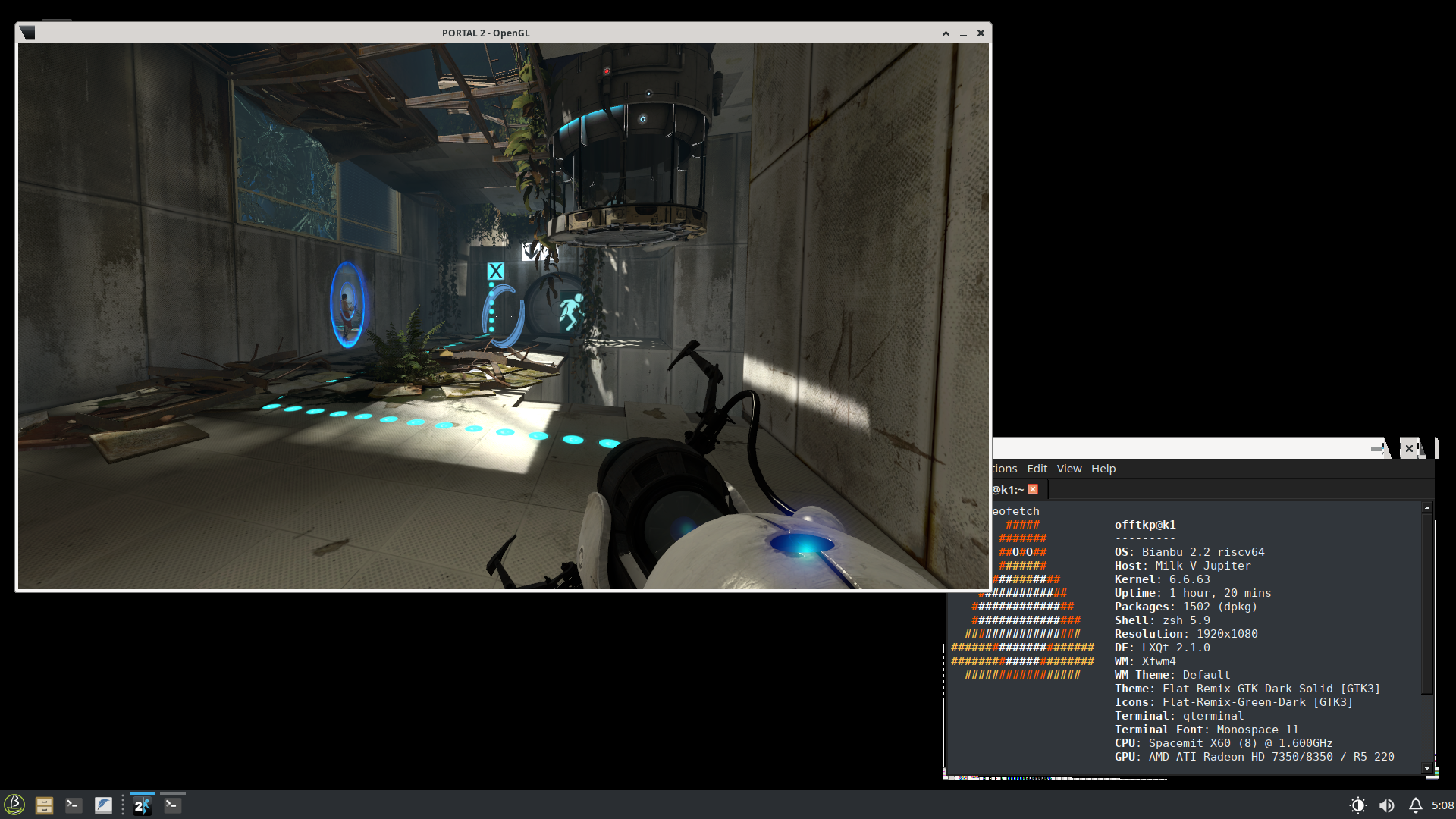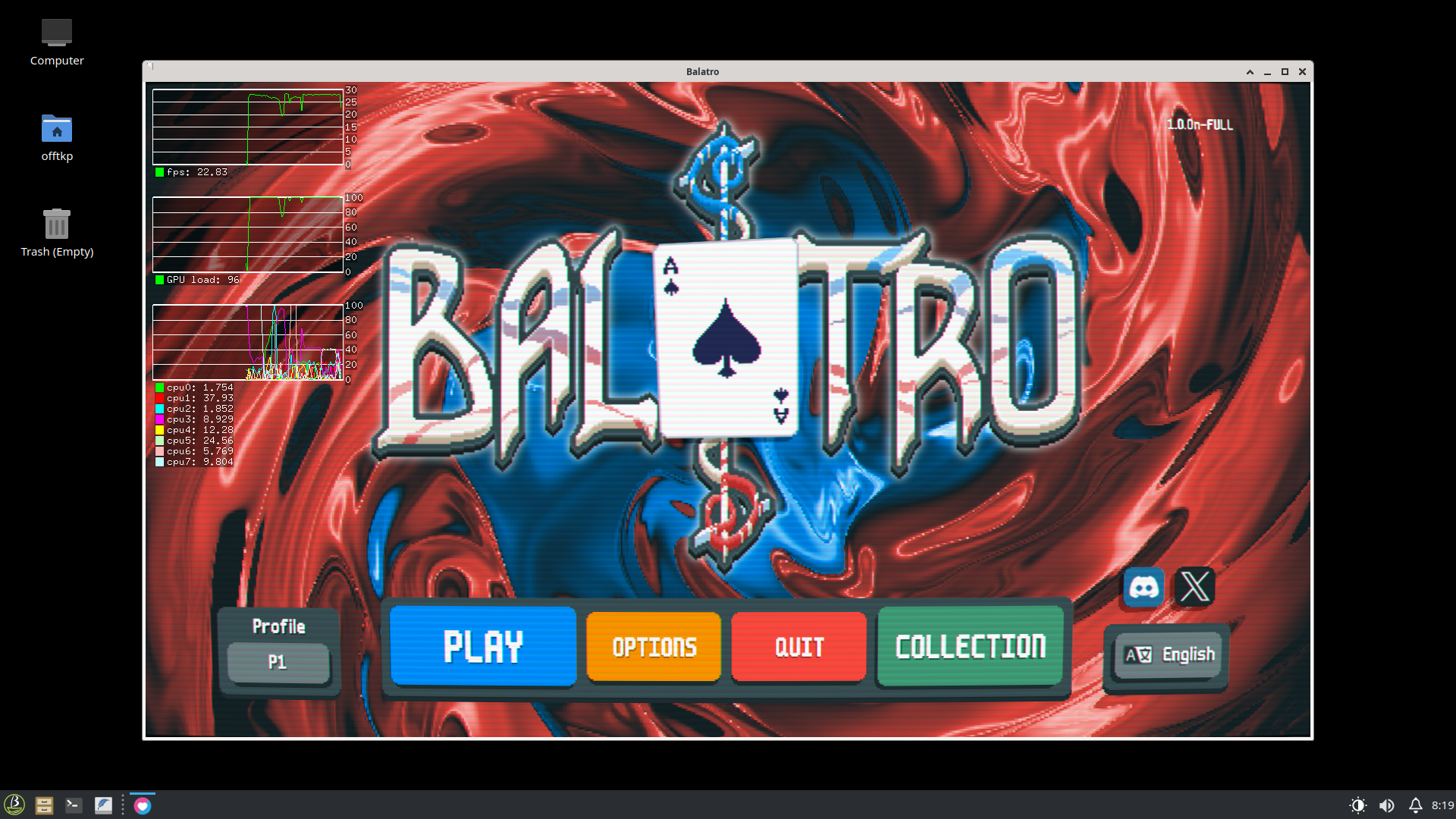felix86 25.06
Welcome to another felix86 blog post. This month we got Unity and 32-bit games working and made many performance improvements!
Easier installation
On Ubuntu/Debian/Bianbu and possibly other distros, you can now install felix86 and a rootfs with a single command:
curl -s https://raw.githubusercontent.com/OFFTKP/felix86/master/src/felix86/tools/install.sh -o /tmp/felix86_install.sh && bash /tmp/felix86_install.sh && rm /tmp/felix86_install.sh
So go ahead and try it out!
Unity, UE3, and 32-bit games
There were many bug fixes during the month of May! One of the features we miss the most in RISC-V for x86-64 emulation is 128-bit compare exchange (CAS). This is necessary for proper emulation of the cmpxchg16b instruction. Unfortunately, no hardware currently supports the Zacas extension, which adds 128-bit CAS. The cmpxchg16b instruction is used extensively by Unity games, and improper emulation leads to frequent crashes and bugs.
Until we get Zacas in hardware, we have implemented a half-solution of using a global lock on every cmpxchg16b instruction. This makes it atomic with respect to other cmpxchg16b instructions, but not with other memory reads/writes. Turns out this is good enough to fix Unity games!
 Cuphead, a Unity game, now playable on RISC-V with felix86
Cuphead, a Unity game, now playable on RISC-V with felix86
Other bug fixes have made at least one Unreal Engine 3 game playable, and maybe more that I haven’t tested.
 Not many Unreal Engine 3 games for Linux out there
Not many Unreal Engine 3 games for Linux out there
Additionally, after even more bug fixes, 32-bit ioctl marshalling support for radeon, and new x87 instructions, some 32-bit games are playable!
 Now you’re thinking with portals
Now you’re thinking with portals
Thunking GLX
OpenGL thunk libraries now work! Games can load an overlay libGL.so/libGLX.so which will make calls into host code.
If you installed felix86 using the script, you can enable thunking using export FELIX86_ENABLED_THUNKS=glx. It is currently disabled by default, as it needs more testing.
If you compiled felix86 make sure to set FELIX86_THUNKS to /path/to/felix86/source/src/felix86/hle/guest_libs.
Technical ramble
One benefit of userspace emulators is they are allowed to employ some tricks for performance gains. For example, many libraries have a stable API across architectures. This means that if a program runs glDrawArrays for example, the host glDrawArrays could be used.
Quick brief on OpenGL inner workings
Things aren’t so simple, however. OpenGL works with a global context. The functions are loaded from an implementation-defined function that returns function pointers. On Linux, this will be either glXGetProcAddress or eglGetProcAddress. This means that thunking OpenGL essentially means thunking GLX and/or EGL.
Thunking GLX brings other problems. GLX interacts with X11 – it uses structs from X11 like the Display struct. The inner layout of this struct is architecture dependent. This not only means that you’d need to thunk libX11, but that it’s also difficult to do so as some structs differ in their layout.
FEX to the rescue
Thankfully there’s a way to get around needing to thunk libX11. You can create a host-side Display object and convert between the host and guest Display pointers when calling GLX functions that use Display. This idea is from FEX-Emu and it saves us a lot of frustration.
Thunking LuaJIT
Some games use Lua scripts. Other games like Balatro are entirely made in Lua. A popular speedy implementation of Lua is LuaJIT, which recompiles Lua code to machine code. However, LuaJIT does some things which invalidate our recompiled RISC-V code. This would previously cause significant slowdown in Balatro.
We now thunk the libluajit.so library, running the RISC-V LuaJIT in place of the x86-64 LuaJIT! This has caused significant performance improvements in Balatro and potentially other LÖVE engine games.
 Balatro went from 2 FPS to 30 FPS and 100% GPU usage, so a GPU upgrade could push it even further!
Balatro went from 2 FPS to 30 FPS and 100% GPU usage, so a GPU upgrade could push it even further!
LuaJIT can call C code from quite a few places, which means our host code needs to wrap the callbacks. You can see this happening in thunks_luajit.cpp. Whenever a C function is registered to be callable from Lua, we wrap it in code that will invoke the recompiler and fix up the arguments from the x86-64 ABI to the RISC-V ABI.
Enabling this needs you to compile LuaJIT for RISC-V, install it, and run export FELIX86_ENABLED_THUNKS=lua.
You can also thunk multiple libraries like we did for the Balatro image: export FELIX86_ENABLED_THUNKS=glx,lua
Thanks for reading the June post!
Contributions are welcome! Anybody interested in RISC-V or x86 can help!
If you find this project interesting, please star the repository.

